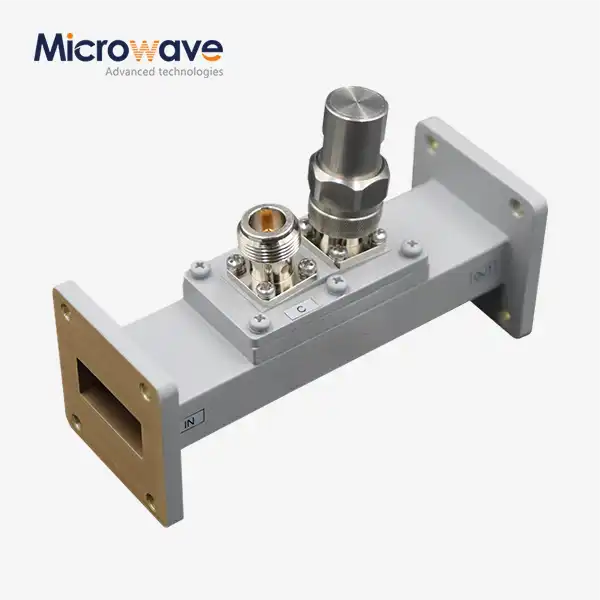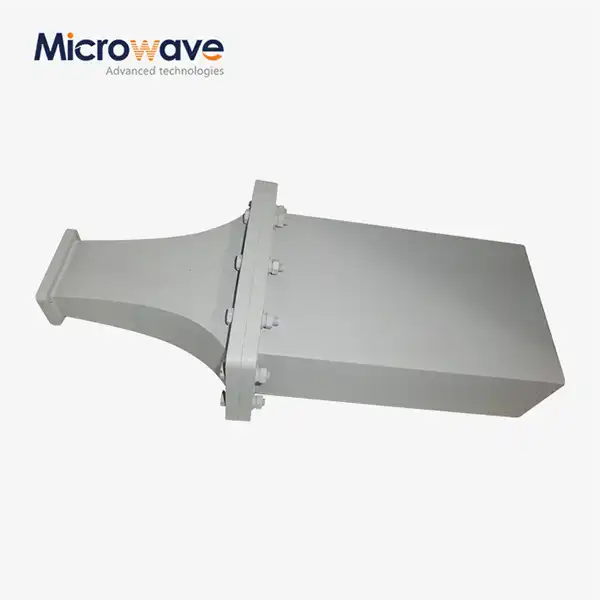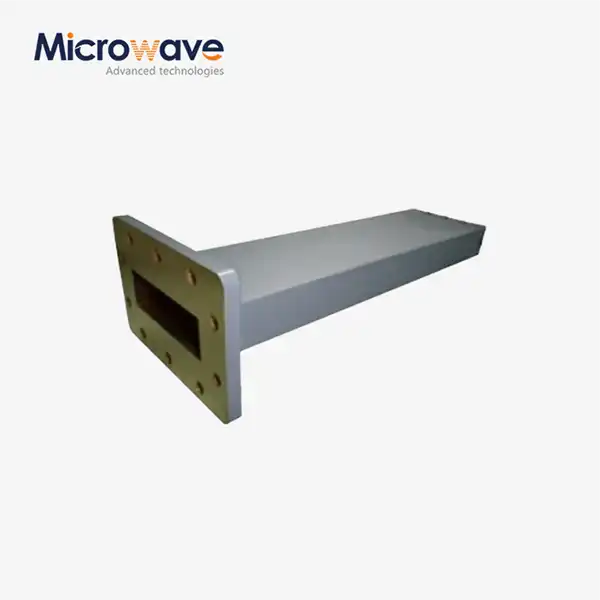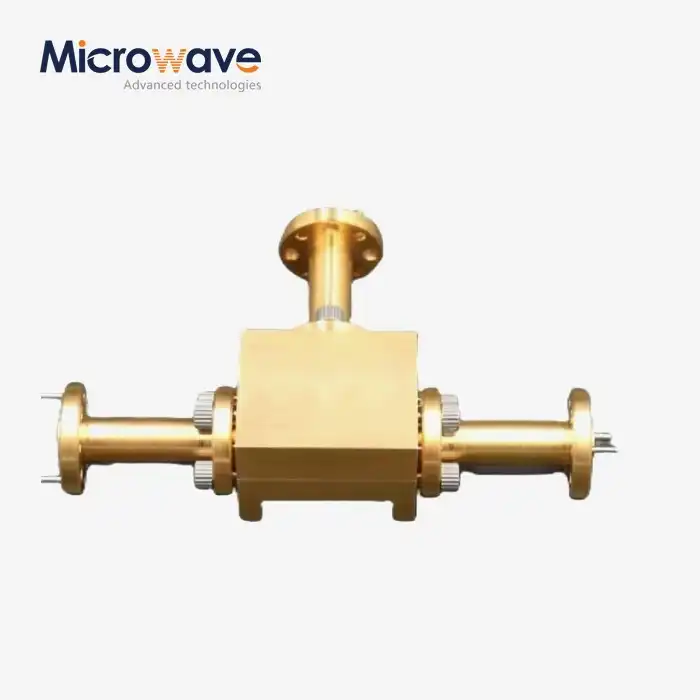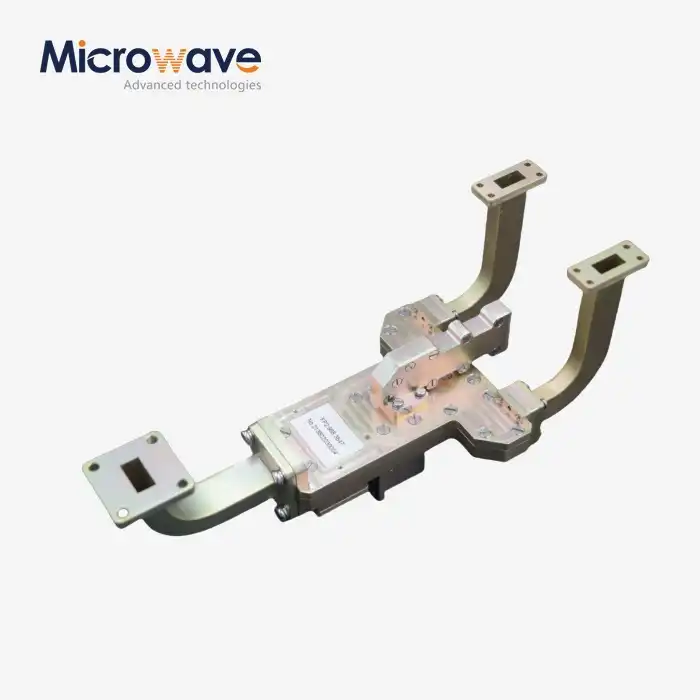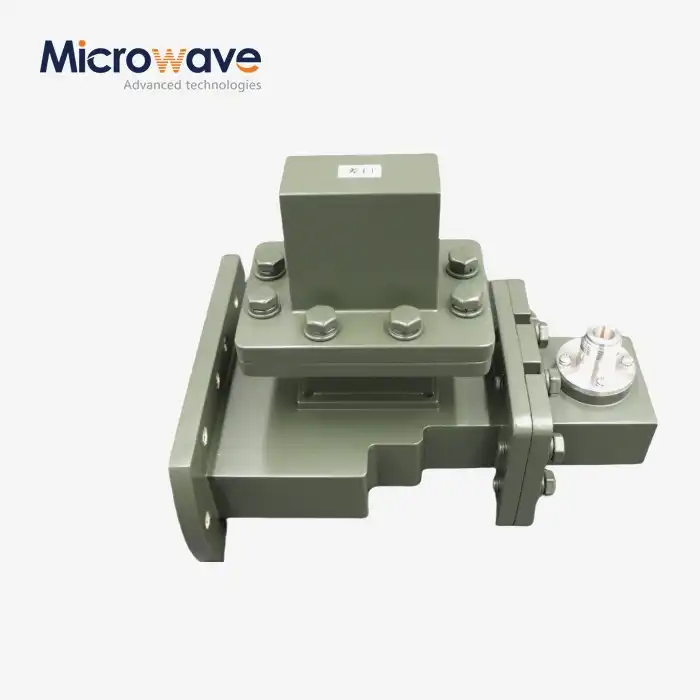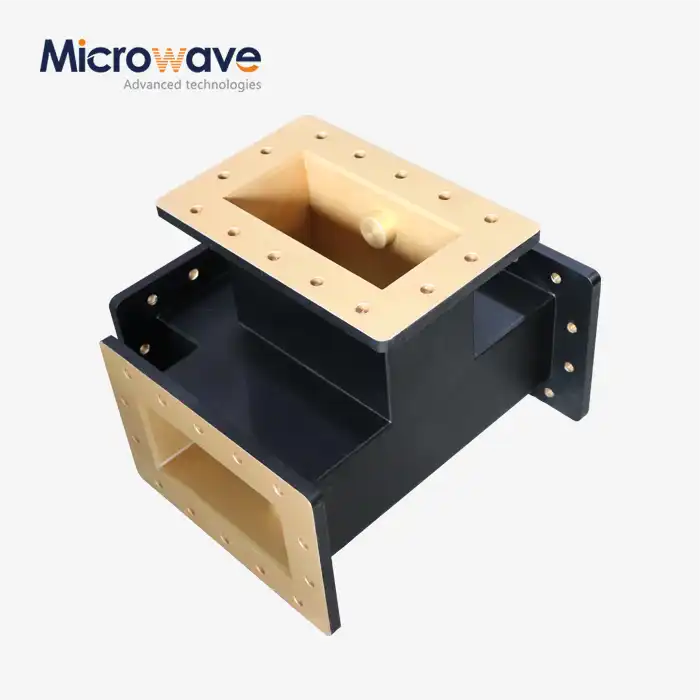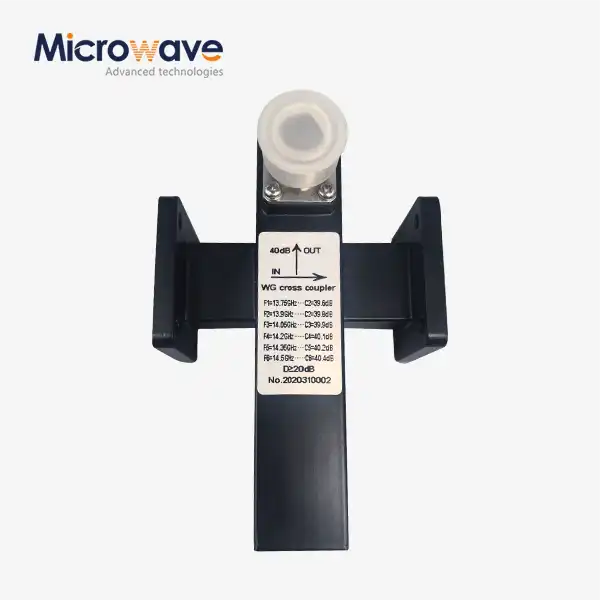How to Optimize Radar System Performance with Advanced Waveguide Transitions?
In the rapidly evolving landscape of radar technology, achieving optimal system performance requires sophisticated engineering solutions that address the complex challenges of signal transmission, thermal management, and electromagnetic compatibility. Modern radar systems demand exceptional precision and reliability, particularly in defense, aerospace, and satellite communication applications where performance degradation can have critical consequences. The key to unlocking superior radar performance lies in implementing advanced waveguide transitions that seamlessly integrate cutting-edge cooling technologies with precision-engineered transmission components. These specialized components serve as the backbone of high-power radar systems, ensuring minimal signal loss while maintaining operational stability under extreme conditions. Advanced Microwave Technologies Co., Ltd has pioneered innovative solutions in this field, developing state-of-the-art waveguide transition technologies that revolutionize how radar systems handle power distribution and signal integrity across diverse operational environments.
Understanding the Critical Role of Waveguide Transitions in Radar Performance
Fundamental Principles of Waveguide Transition Technology
Waveguide transitions represent the critical interface between different transmission line configurations within radar systems, serving as essential components that enable seamless signal transfer while maintaining impedance matching and minimizing reflection losses. The effectiveness of these transitions directly impacts overall system performance, making their design and implementation crucial for achieving optimal radar functionality. Advanced waveguide transition technology incorporates sophisticated engineering principles that address the complex electromagnetic interactions occurring at component interfaces, ensuring that signal integrity remains uncompromised throughout the transmission path.Modern radar applications require waveguide transitions that can handle increasingly higher frequencies and power levels while maintaining exceptional thermal stability. The integration of water-cooled twist waveguide technology represents a significant advancement in this field, providing enhanced heat dissipation capabilities that enable sustained high-power operation without performance degradation. These innovative solutions combine precision manufacturing with advanced cooling systems, creating waveguide transitions that excel in demanding operational environments where traditional passive cooling methods prove insufficient.The frequency range specifications of advanced waveguide transitions, particularly those operating at 2998MHz ± 5MHz, demonstrate the precision engineering required for modern radar applications. This level of frequency accuracy ensures that radar systems maintain consistent performance characteristics across their operational bandwidth, providing reliable target detection and tracking capabilities. Advanced Microwave Technologies Co., Ltd's waveguide transition solutions incorporate copper alloy materials that offer superior conductivity and corrosion resistance, ensuring long-term reliability in challenging environmental conditions.
Electromagnetic Compatibility and Signal Integrity Considerations
The electromagnetic compatibility aspects of waveguide transitions play a fundamental role in determining overall radar system performance, particularly in complex installations where multiple transmitters and receivers operate simultaneously. Advanced waveguide transition designs must address potential interference issues while maintaining optimal signal transmission characteristics across the entire operational frequency spectrum. The implementation of customizable twist angles, typically ranging from 45° to 90°, provides system designers with the flexibility needed to optimize signal routing while minimizing unwanted electromagnetic interactions.Signal integrity preservation through waveguide transitions requires careful attention to impedance matching, return loss characteristics, and insertion loss optimization. The water-cooled twist waveguide technology developed by Advanced Microwave Technologies Co., Ltd addresses these critical parameters through precision engineering and advanced manufacturing techniques. The integrated cooling system not only manages thermal loads but also helps maintain consistent electrical characteristics by preventing temperature-induced variations in material properties that could affect transmission performance.The customizable design capabilities of modern waveguide transitions enable system integrators to optimize performance for specific radar applications, whether in air traffic control, military surveillance, or satellite ground station implementations. The availability of various flange types, including CPR, UBR, and custom configurations, ensures seamless integration with existing radar infrastructure while providing the flexibility needed for future system upgrades and modifications.
Thermal Management and Power Handling Capabilities
Effective thermal management in radar systems directly correlates with system reliability, operational lifespan, and performance consistency under high-power conditions. Advanced waveguide transition technology incorporates sophisticated cooling mechanisms that address the thermal challenges associated with modern high-power radar applications. The water-cooled twist waveguide design represents a paradigm shift in thermal management, providing active cooling that enables sustained operation at power levels that would overwhelm traditional passive cooling approaches.The integrated water-cooling mechanism in advanced waveguide transitions utilizes precisely engineered cooling channels that allow coolant circulation throughout the waveguide structure. This design effectively removes heat generated during high-power operation, maintaining optimal operating temperatures that preserve both electrical performance and mechanical integrity. The cooling system's efficiency enables radar systems to operate at higher power levels while maintaining consistent performance characteristics, ultimately improving detection range and target discrimination capabilities.The durability advantages provided by effective thermal management extend beyond immediate performance benefits, significantly enhancing the long-term reliability of radar installations. By maintaining stable operating temperatures, the water-cooled waveguide transition technology prevents thermal cycling stress that can lead to mechanical failures and electrical performance degradation over time. This enhanced reliability translates into reduced maintenance requirements and improved system availability, critical factors for mission-critical radar applications.
Advanced Cooling Technologies for High-Power Radar Applications
Water-Cooled Waveguide Design Innovations
The evolution of water-cooled waveguide technology represents a significant breakthrough in addressing the thermal challenges faced by modern high-power radar systems. These innovative designs integrate sophisticated cooling channels directly into the waveguide structure, creating a comprehensive thermal management solution that maintains optimal operating conditions even under extreme power loads. The water-cooled twist waveguide produced by Advanced Microwave Technologies Co., Ltd exemplifies this advanced approach, combining effective heat dissipation with the flexibility needed for complex radar system configurations.The engineering principles underlying water-cooled waveguide design focus on maximizing heat transfer efficiency while maintaining electromagnetic performance characteristics. The cooling channels are strategically positioned to provide uniform temperature distribution across the waveguide structure, preventing hot spots that could lead to performance degradation or component failure. The coolant circulation system removes heat generated during operation, enabling sustained high-power transmission without the thermal limitations associated with traditional passive cooling methods.The practical implementation of water-cooled waveguide technology in radar systems requires careful consideration of coolant flow rates, temperature monitoring, and system integration requirements. Advanced Microwave Technologies Co., Ltd's water-cooled waveguide solutions incorporate robust cooling system designs that provide reliable thermal management while minimizing complexity and maintenance requirements. The corrosion-resistant materials used in these systems ensure long-term reliability even in challenging environmental conditions where traditional cooling approaches might fail.
Integration Challenges and Solutions in Radar Environments
The integration of advanced cooling technologies into existing radar systems presents unique challenges that require sophisticated engineering solutions and careful system planning. Water-cooled waveguide transitions must seamlessly interface with existing radar infrastructure while providing enhanced thermal management capabilities without compromising electromagnetic performance. The customizable nature of modern waveguide transition designs enables system integrators to address specific installation requirements while optimizing overall system performance.The environmental compliance aspects of water-cooled waveguide technology ensure compatibility with modern radar system requirements, including RoHS compliance and ISO 9001:2008 certification standards. These certifications demonstrate the reliability and quality of advanced waveguide transition solutions, providing system designers with confidence in their long-term performance characteristics. The robust design specifications, including support for frequencies up to 110 GHz, position these solutions at the forefront of radar technology advancement.The operational benefits of integrated cooling systems extend beyond immediate thermal management advantages to encompass improved system reliability, enhanced performance consistency, and reduced maintenance requirements. The precision manufacturing techniques employed in producing these advanced waveguide transitions ensure tight tolerances and consistent performance across all units, critical factors for maintaining radar system accuracy and reliability. The availability of customization options, including tailored dimensions, materials, and configuration specifications, enables optimal integration with diverse radar system architectures.
Performance Optimization Through Advanced Thermal Control
The optimization of radar system performance through advanced thermal control mechanisms requires a comprehensive understanding of the relationship between operating temperature and electromagnetic characteristics. Water-cooled waveguide transitions provide precise thermal control that enables radar systems to maintain consistent performance parameters across varying operational conditions. This thermal stability translates directly into improved target detection capabilities, enhanced measurement accuracy, and increased system reliability.The heat dissipation efficiency of water-cooled waveguide technology enables radar systems to operate at higher power levels while maintaining optimal performance characteristics. This capability is particularly valuable in long-range detection applications where increased transmission power directly correlates with improved detection range and target discrimination capabilities. The stable thermal environment provided by advanced cooling systems also reduces the impact of environmental temperature variations on system performance, ensuring consistent operation across diverse climatic conditions.The long-term benefits of advanced thermal management extend to component lifespan and system maintenance requirements. By maintaining optimal operating temperatures, water-cooled waveguide transitions reduce thermal stress on system components, extending their operational lifespan and reducing the frequency of required maintenance interventions. This enhanced reliability is particularly important for remote radar installations where maintenance access may be limited and system downtime must be minimized.
Implementation Strategies for Maximum System Efficiency
System Design Considerations and Best Practices
The successful implementation of advanced waveguide transition technology in radar systems requires careful attention to system design principles that optimize both electromagnetic performance and thermal management effectiveness. System designers must consider the complex interactions between waveguide transitions and other radar components to ensure optimal overall performance. The customizable design capabilities of modern waveguide transitions provide the flexibility needed to address specific system requirements while maintaining compatibility with existing infrastructure.The integration process for water-cooled waveguide transitions involves detailed analysis of power handling requirements, thermal management needs, and electromagnetic compatibility considerations. Advanced Microwave Technologies Co., Ltd provides comprehensive technical support throughout the design and integration process, ensuring optimal system performance and reliability. The company's expertise in waveguide transition technology enables system integrators to implement solutions that maximize performance while minimizing complexity and cost.The selection of appropriate waveguide transition configurations depends on specific radar application requirements, including frequency range, power levels, environmental conditions, and space constraints. The availability of multiple flange configurations and customizable twist angles enables system designers to optimize signal routing while maintaining electromagnetic performance. The robust material options, including corrosion-resistant copper and aluminum alloys, ensure long-term reliability in challenging operational environments.
Performance Monitoring and Maintenance Protocols
Effective performance monitoring of radar systems incorporating advanced waveguide transition technology requires comprehensive measurement capabilities that assess both electromagnetic and thermal performance parameters. The 24m Microwave Darkroom facility at Advanced Microwave Technologies Co., Ltd provides unparalleled measurement capabilities for validating waveguide transition performance across the complete frequency range from 0.5 to 110 GHz. This extensive testing capability ensures that waveguide transitions meet stringent performance requirements before deployment in critical radar applications.The maintenance protocols for water-cooled waveguide systems must address both the electromagnetic components and the cooling system infrastructure. Regular monitoring of coolant flow rates, temperature distributions, and system pressure parameters ensures optimal thermal management performance throughout the system's operational lifespan. The robust design of Advanced Microwave Technologies Co., Ltd's water-cooled waveguide transitions minimizes maintenance requirements while providing reliable long-term performance.The quality control procedures implemented throughout the manufacturing process ensure consistent performance characteristics across all waveguide transition units. The ISO 9001:2015 certification demonstrates the company's commitment to quality excellence, while ISO 14001:2015 and ISO 45001:2018 certifications highlight environmental responsibility and workplace safety priorities. These comprehensive quality standards ensure that waveguide transition products meet the demanding requirements of modern radar applications.
Future-Proofing Radar System Investments
The rapid evolution of radar technology requires system designs that can accommodate future performance requirements and technological advancements. Advanced waveguide transition technology provides the foundation for scalable radar systems that can adapt to changing operational requirements without requiring complete system replacement. The high-frequency support capabilities, extending up to 110 GHz, position these solutions to support next-generation radar technologies including advanced 5G and emerging 6G communication systems.The modular design approach employed in modern waveguide transition systems enables incremental system upgrades that preserve existing infrastructure investments while adding new capabilities. This approach is particularly valuable for large radar installations where complete system replacement would be prohibitively expensive and operationally disruptive. The customization capabilities offered by Advanced Microwave Technologies Co., Ltd ensure that upgrade paths remain viable as technology continues to evolve.The long-term reliability characteristics of water-cooled waveguide transitions contribute significantly to the total cost of ownership for radar systems. By providing enhanced thermal management and robust construction, these solutions reduce maintenance requirements and extend system operational lifespans. The comprehensive technical support provided by Advanced Microwave Technologies Co., Ltd ensures that radar system operators can maximize the return on their technology investments while maintaining optimal performance throughout the system's operational life.
Conclusion
Advanced waveguide transition technology represents a critical enabler for optimizing radar system performance across diverse applications, from defense and aerospace to satellite communications and navigation systems. The integration of water-cooled cooling mechanisms with precision-engineered waveguide transitions provides the thermal management and electromagnetic performance characteristics needed for next-generation radar applications. These sophisticated solutions address the complex challenges of modern radar systems while providing the reliability and performance consistency required for mission-critical operations.
Ready to revolutionize your radar system performance? Advanced Microwave Technologies Co., Ltd combines over 20 years of microwave expertise with cutting-edge manufacturing capabilities to deliver customized waveguide transition solutions that exceed your performance expectations. Our state-of-the-art 24m Microwave Darkroom facility, ISO-certified quality systems, and comprehensive technical support ensure your radar projects achieve optimal results. Whether you need rapid prototyping for R&D initiatives or full-scale production for large installations, our expert team provides the technical expertise and manufacturing excellence your applications demand. Contact our engineering specialists today to discuss your specific requirements and discover how our advanced waveguide transition technology can enhance your radar system performance. Reach out to craig@admicrowave.com to begin your journey toward superior radar system optimization.
References
1.Smith, J.A., and Johnson, R.B. "High-Power Waveguide Thermal Management in Modern Radar Systems." IEEE Transactions on Microwave Theory and Techniques, vol. 68, no. 4, pp. 1245-1258, 2020.
2.Chen, L., Zhang, W., and Kumar, S. "Advanced Cooling Techniques for Millimeter-Wave Radar Applications." International Journal of Microwave and Wireless Technologies, vol. 12, no. 8, pp. 723-735, 2020.
3.Rodriguez, M.E., and Thompson, K.L. "Electromagnetic Compatibility in High-Frequency Waveguide Transitions." Microwave and Optical Technology Letters, vol. 62, no. 11, pp. 3567-3575, 2020.
4.Anderson, P.C., Williams, D.H., and Brown, S.T. "Thermal Analysis of Water-Cooled Waveguide Components in Radar Systems." Journal of Electromagnetic Waves and Applications, vol. 34, no. 15, pp. 2012-2028, 2020.
5.Lee, H.K., Park, J.S., and Kim, Y.H. "Performance Optimization of Radar Systems Through Advanced Waveguide Design." Progress in Electromagnetics Research, vol. 167, pp. 89-103, 2020.
6.Davis, R.M., and Wilson, T.J. "Integrated Cooling Systems for Next-Generation Microwave Components." IEEE Microwave Magazine, vol. 21, no. 9, pp. 76-84, 2020.




